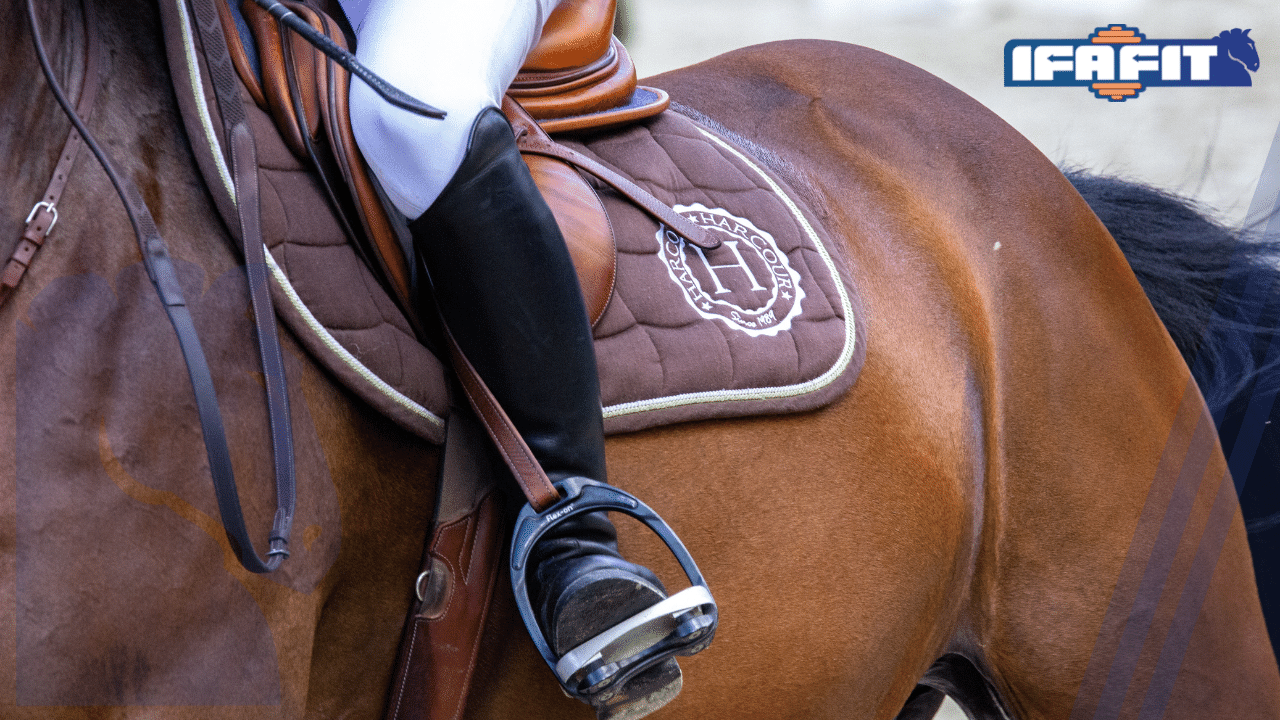Jump 1: Building Stability & Suppleness Improves Your Seat

Stability is one of the first components covered in EFA and it is a part of my “signature system” in Jump 1 because through my experiences with riders I discovered that this is the foundation of all riding. The best riders are quiet and composed in the saddle resulting from stable strong core muscles. Increasing stability adds the first level of confidence in a rider. Upgrading your stability improves your connection in the saddle and allows your horse to receive your aids more effectively. Stability and core strength are closely associated and we’ll speak more about that further below.
Suppleness is the other important component involved in Jump 1. Suppleness, also known as flexibility, is defined as being “characterized by ease in bending, limber”. It’s important to know what and why this is so commonly used and mentioned in the equestrian world so much.
Without stability, there’s a lack of suppleness. We need our hips, knees, and ankles to have stability first before building the flexibility around those specific joints. Having excessive flexibility but a lack of strength to stabilize those joints is counterproductive. In EFA we will work through the first phase of 4 weeks building stability and suppleness collectively to use more of your seat in the saddle.
Posture-Alignment
Posture-Alignment is important in the saddle because it helps to create a proper position on the horse. Think of your body in ‘basic position’, with a straight line from shoulders to hips to heels. Often while doing assessments I notice that riders lean/tilt to one side more than the other, or even see riders slightly turned with one shoulder more forward than the other. This is breaking the first rule of basic position and this lack of body awareness is causing improper balance, posture and core strength to hold the proper position for extended periods of time in the saddle. Fixing this improves your ride and helps your horse move better as well.
Balance
Equipoise sums up the purpose of balance; defined as equal distribution of weight, even balance and equilibrium. We’ll use this word more because it’s perfect for the equestrians and the saddle. Balance is needed to stay in the right synced position with your horse’s different gaits and movements. Increasing stability helps you stay balanced in the saddle.
Core
Through the years of training riders, I’ve noticed that adding core strength is the biggest way you can improve the most important components of riding. However, improving your core strength must be accompanied by a medley of physical aspects; it includes posture/alignment and balance. Strengthening the core is integral in maintaining postural alignment, balance, stability and even suppleness in the saddle. In unison these elements become cohesive, giving your body the best stable and solid sense of grounding in the saddle to perform your best throughout the many unstable moments and movements that happen while riding.
Synopsis
In Jump 1 of Equestrian Fitness Academy you will build two major components of your riding through different fitness exercises. Building Stability and Suppleness in the saddle.
Stability (in the saddle) is the ability to hold firmness in specific positions. To achieve this we must increase our core strength while working on the balance and postural alignment simultaneously.
Suppleness (in the saddle) is the ability to exhibit flexibility without straining. To achieve this we must add flexibility and range of motion to the parts of our body that need it the most. This is done specifically by minimizing the imbalances seen during the initial equestrian fitness assessment. More flexibility-suppleness adds relaxation and composition to the saddle.
Independence between your legs and hands.
This connection thus gives you more freedom of movement.

